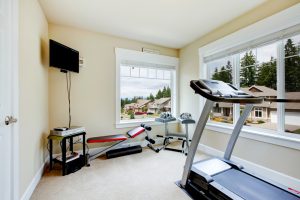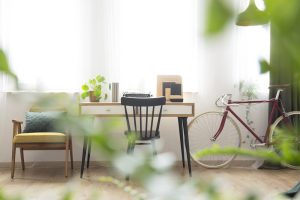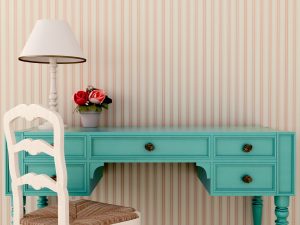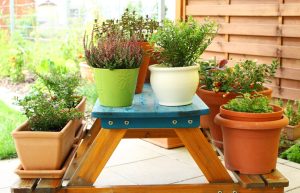Author: Gayle Edwards
We love to collect things. Whether it’s nostalgia for a particular period of time, a habit carried on from childhood or purely as an investment for the future, people build up vast amounts of items.
The choice of what to collect is limitless. From rocks to coins, stamps to artwork, toys to shoes, a collection can be anything that catches your eye, and the most seemingly unusual thing can turn out to have great value to a fellow collector. Just last month, a collection of Pokemon cards was sold by a Midlands auction house for £25,000. If you are amassing a quantity of potential investments, it’s important you keep them stored and cared for in pristine condition.
Of course, we can’t all afford to build a large collection of diamonds or works of arts. But, if you do want to start a collection, here are some of the most popular choices.

Comic Books
Children have been reading and collecting comic books for generations, and the majority of them may not have much individual worth. However, when you do have one that’s rare, vintage or unique in some way, it’s value may be dependent on how well cared for it is. No coffee rings or torn pages please. Comic books are often stored in individual plastic covers and in watertight boxes, laid flat to avoid sagging and bending the spines.
Stamps
It may seem old fashioned, but stamp collecting remains a very popular pastime. An avid collector enjoys not just the stamps, but the history that comes with them. However, it’s important to care for them. We’ve all heard stories of very old stamps with minor printing issues selling for lots of money, but there are also horror stories of them losing value after being damaged. Stamps need to be carefully stored in dry, dark storage where they are safe from water and light damage.
Trading Cards
As with the previously mentioned Pokemon cards, trading cards can have immense value to collectors around the world. There are sets of cards for all interests, from cars to sporting heroes, comic characters to Disney. If you have favourite cards you like to look at regularly, you can place them in purpose built sleeves. For large collections, carefully organised storage boxes make a simple way to keep them tidy.
Wine
While most of us enjoy a glass of wine and appreciate a good bottle, some do take it to the next level and build a collection of valuable wines. When you want to start wine collecting, storage is one of the most important things. You can create a wine cellar in your own home by picking a spot that dark and cool most of the time, such as a cellar or cupboard. However, ideally it also needs to be kept at an even temperature if possible, and that’s difficult to do in our modern, centrally heated homes. If you are entering into collecting seriously, you may want to consider an indoor self-storage unit where temperatures fluctuate far less.

Rare Books
We do love a good story and have bookshelves full in our homes. But collecting valuable and rare books can be an exciting hobby, starting with the fun of hunting down a rare first edition. Your collection doesn’t have to start with a dusty and ancient text squirreled away in a second hand bookshop – a first edition Harry Potter is worth a considerable amount.
When your collection takes the step from simple hobby to expensive and valuable, or from a single shelf to filling a room, it may be time to consider a self-storage unit. With your own unit, specially designated space for your collection, you have all the room you need to store everything carefully – and expand it as much as you want to.
When you are planning to build an online business, understanding your marketplace can be key. There’s a number of things to consider to make the most of your e-commerce shop, with the main one being where you decide to sell your items.

Where should you be setting up shop?
There are plenty of online platforms for selling your products, but the best known have to be eBay or Amazon. Are these right for you though?
Both are huge, established marketplaces, which gives you the advantage of a large consumer base. Plus, your buyers already trust the platform and protection it gives them. However, you are competing against large numbers of established sellers, and both Amazon and eBay have higher seller fees than other platforms.
One of the main differences between the two is that you have a fixed price on Amazon, while you can choose to auction items on eBay, or sell them with a fixed Buy It Now price. Another is the way listings appear on each platform. On Amazon, if you have the same product as other sellers you are often listed on the same product description. The main way to stand out is to keep your prices low enough to be competitive, which could be a problem for small sellers.
On eBay, you have control over the pictures and wording you use to list your item, so spending time understanding how to make the best use of headlines and keywords can be beneficial. You can also compete more directly with large sellers, as buyers may have other priorities than just cost, such as timeframes – how soon the auction ends – distance and options to collect goods themselves.

Other options for online sellers
Etsy is a fabulous online marketplace for handcrafted and vintage goods. If your products fit into these areas, this could be the best option. Your goods will stand out more than on eBay or Amazon, and buyers come to Etsy specifically for something unique.
Another growing marketplace can be found on Facebook. However, it has limitations. Firstly, you need to understand the platform. There’s the Marketplace where you can list secondhand items, but you don’t actually sell them. If a buyer wants your goods, they contact you direct to arrange the details.
Then there’s your Facebook Shop. You need to set up a business page and then learn how to set up the selling element. Then there’s the marketing to bring buyers to your page. And that’s where Facebook can be hard work, as you need to build up engagement with your audience to be found. Starting your e-commerce business on Facebook can be a slow process, especially when you already have an established consumer audience on other platforms.
Building your own website
Another option for selling is to set up your own website and online shop. You have the immediate advantage of controlling everything yourself – prices, listings, descriptions and costs. You also won’t face immediate competition from other sellers, although you do have to consider that other people may be selling the same items, and today’s savvy buyers always shop about to compare prices.
To make the most of selling on your own site, you need to start with a great website. This doesn’t have to cost a fortune – in fact you can build your own online shop fairly easily. But you do need to understand things like SEO (search engine optimisation) and have an idea of how to market your shop to build up presence.
With your own shop you are also building up your brand, so if you also have a bricks and mortar shop, this is an obvious choice. Your customers will get to know you through your reliability and reviews, and you appeal to customers who don’t like the big platforms or prefer to support the local and smaller business.

A little bit of everything
When you are just starting your online shop, you might want to try everything. List some items on eBay and Amazon – or Etsy if your products fit – and build your own website as well. Then you can monitor and compare sales to see where you make the most profits.
Once your business takes off, you’ll need more space for your products. Keeping stock safe, organised and undamaged means you need a place for shelving, packing and a desk, with wifi to manage your orders. That’s where we come in. Call Cookes today to see how we help support online retailers to grow on 0121 250 5055.
The market is starting back up, viewings are happening and houses are selling. If your house has sold and you are preparing for moving day, you probably already have a lot on your mind. So, make moving day a little less stressful with our top tips.
Start packing early.
Unless you live in a very small bedsit, you likely have a lot more stuff than you realise to pack. So don’t leave it till the last minute. Start packing early, tackling one room at a time, and label every box clearly so you know what to unpack first and what can wait for a while while you settle into your new home.

Make a moving day list
There is a lot to remember on moving day, from turning off any services and cancelling the broadband to giving your new address to the neighbours. Always do one last walk through before you close the door, and remember to post the keys through the letterbox.
Charge up all your devices
Make sure your phone is fully charged for the day, and that you have the number for your movers, the sellers of your new home and the estate agents, in case there are any last-minute panics.
If you have children with you, make sure their devices are charged too. You might plan on having them help you move in if they are old enough, but in the end it may just be easier to keep them occupied.

Arrange pet care
Much as we love the furrier members of the family, having the dogs and cats underfoot while you move in will add to your stress, especially if they get out and lost before they know the way around their new home. So arrange to put them into pet care or ask a friend to look after them while you unpack, and introduce them to their new home once you have finished unloading the van.
Plan for your first night
Moving day is a long and tiring event. Plan ahead for the essentials – a nice hot cuppa. Prepare a box of essential items that you’ll want immediate access to. The kettle, mugs, coffee and milk, a spoon, and toilet roll.
Don’t forget to feed yourself and the family too. Prepare some sandwiches and snacks for the day time, and a meal for dinner. By the time you’ve settled in, you may not feel like cooking or heading out for a takeaway.

Set the beds up first
The first piece of furniture you need to set up are the beds. After a day of hauling boxes you’ll feel much better when you know you can climb into a clean bed at the end of the day and get a good night’s sleep.
Only take what you need
If you are moving a family-sized amount of furniture and belongings, it may be more than you can face in one day. Renting a self-storage unit for the short term will make your move a lot faster and easier.
Pack away the heavier and bulky items, the clutter from cupboards and seasonal décor, and leave it all in storage until you’re settled in. You can collect the rest from your unit when you are ready for it, and once you’ve decided where in your home you are ready to put it.
Take the stress out of moving day by planning ahead. As the evening arrives you’ll be all settled in for the evening and ready for your dinner and a glass of wine.
Have you ever thought about what you would do if you had a little more space in your home? How about if you had a whole extra room?

A traditional spare bedroom
The first use that springs to mind is an extra bedroom – the traditional meaning of a spare room. If you have regular visitors staying overnight, grandparents stopping by to look after the children perhaps, then having an extra bedroom prepared is obviously useful.
But if it’s only used occasionally, then handing over an entire room in your house to an empty bed seems a bit wasted when there are plenty of day bed or inflatable options that mean when they aren’t needed, you can hide them out of sight. So, what could you do with that spare room?
A home office
As many of us have found in the last few months, when you are working from home you need a little peaceful space. Imagine having a little den of your own, a place where you can pile up the paperwork, printer and boxes of stock and keep them away from the rest of the house.

Your home gym
When you have a gym in your home, just think of the advantages. You can get straight out of bed and start your day with a workout, without having to travel anywhere. No more queuing for machines. Straight upstairs to your very own shower, with all your preferred toiletries to hand. Having a gym in your home means you can fit in small amounts of exercise daily around your own routine, rather than having to schedule slots into an already busy day.
A personal library
Wall to wall bookshelves, a cosy armchair, and a standing reading lamp. Turn your spare room into your own hiding space and enjoy the peace and quiet. We’d have to put a coffee machine in there too.
A walk-in wardrobe
If you love fashion, you’ve probably got a large pile of clothes and a wardrobe that’s just so full you can’t see one shirt from another. Imagine walking into a room lined with clothes rails, a large full-length mirror, wonderful lighting, and a rack just for shoes. If that’s your dream, then all you need is to make some space in your home to bring it to life.
A games room
Not all playrooms have to be for children. In fact, if you are going to put a pool table in yours, you should probably keep them out. With some thought into how to make the most of your space, you could create a fantastic place to entertain friends. Pool might not be your thing, so how about table football or a dartboard?

Your own bar
When you enjoy socialising but want control of the music, then having your own bar is a great idea. If you have a spare room downstairs or can convert your garage, you’ve got the perfect space to set up a mini-bar and wine rack. Invite friends round and enjoy karaoke nights – it might be best to invite the neighbours.
A craft studio
Whether you enjoy sewing or jewellery making, crafting usually requires a fair amount of space. You need to store your sewing machine, beads, fabrics, materials, and books. Having your own craft room means you can keep the mess in one place, and you don’t have to clear up partway through a project so that the table can be used at mealtimes.
If you do decide to make more use of the spare room in your home, the first thing to do is declutter. If you need to store anything with us, we’ve on hand to talk about storage units. Just give us a call on 0121 250 5055.
Running a business from home has always been a bit stressful, but over the last month or two we’ve faced even more challenges. For the sake of peace and calm in your home, now might be a good time for a little home office revamp.
Designate a work space
If you haven’t got a separate room to use as an office, choose a corner of a room and designate it the official office space. This will allow you to separate work from home life, which is important for a number of reasons.

1 – A separate place for your important work papers will keep peace in the home. The family will know that it’s a no-play area, meaning you are less likely to have sticky fingerprints on your documents, or cereal spilt over your keyboard.
It also means that your papers stay in their designated spot, and the only person to blame when they are left lying about the coffee table or get mixed in with the school textbooks is yourself.
2 – Your working hours may not follow the traditional 9am-5pm – particularly at the moment. But when you do ‘leave work’, you’ve left. That’s it – business day is done and your evening can begin.
Separating your work from your home life is essential to allow your mind to rest and keep your stress levels down.
3 – Productivity improves when you are sat in your home office. You’ll find it far easier to concentre when you are sat at a desk in your workspace than lounging on a sofa or squeezed onto the kitchen table with domestic life going on around you.
And, if you can reach an agreement with your family that office time is also ‘do not disturb’ time, you’ll get more done faster, so you can finish up and have plenty more time to relax and play.

What do you need for your home office space
It depends on the type of business you are in, but you will probably find you need very little in the way of furniture to get set up.
The right type of desk
If your home office is going to be a permanent space, put some thought into your desk. An antique roll top might look glamourous, but have they got enough room for your monitors and keyboard? Meanwhile, a standard basic desk from a national chain may be cheap and practical, but will it wear well or look scruffy quickly.
If you like to spread out, a large table might be better, but it does need to be the right height to allow you a comfortable seating position.
A comfy seat
Talking of seating positions, your chair is, possibly, one of the most important purchases if you will be spending a lot of time at your desk. Long hours sat down will be hard on your back, and poor posture can have long term consequences. Selecting a comfortable, ergonomic chair that fits nicely under your desk and is supportive on your back is essential.
A clutter-free zone
Although many of us keep digital files, very few offices are completely paper-free. If you do have lots of paperwork, samples, stationery or other business necessities to keep, having adequate storage will keep it out of sight and tidy.
If your business requires a lot of stock, you may not have the cupboard space for it. A small self-storage unit can be the extra cupboard that you need – neatly stacked with shelving so that your stock boxes are tidy and undamaged, and more importantly, not blocking up corridors and taking up space when, especially now, you all need a little more room at home to manoeuvre.

A pleasant working environment
One final thing that is important is that your home office is a nice place to work. No one feels motivated surrounded by mess, or in a drab, dark space. You might, out of necessity, be slotted into a corner of the living room, but you can still make it feel like a pleasant work environment.
Bring plants in to add greenery and to lift your mood– and they’ll also add oxygen to the air which helps you concentrate more. Add some pictures that cheer you up; how about one of your favourite holiday spots as an added incentive to work towards that holiday goal? Include a standing lamp or desk light so that you have a brightly lit space – reducing eye strain and headaches.
Of course, if you do have a separate room you can bring lots more to your décor in terms of colour, style and shelving, making your home office completely your own.
If you would like to talk about self-storage options as a way of expanding your business, or keeping peace in your home, call us today on 0121 250 5055.
It’s spring, the weather is warming up, and we’re thinking about gardening. Well, container gardening anyway. Growing your own vegetables in containers is an easy way to get started, and there are quite a few benefits.

You don’t need a lot of space
If you don’t have a lot of room in your garden, or only have a balcony or windowsill available, you can still grow quite a few vegetables in pots and containers. Tomatoes, for example, make a great choice. You can even grow some varieties in hanging pots, so there’s no need to use valuable floor space.
There’s more room for choice
Different vegetables grow best in different soil types. By keeping them in containers you can grow them right next to each other without difficulty.
Pain-free and hassle-free gardening
If the thing that puts you off gardening is all the weeding and heavy lifting, you’ll like container gardening. There’s very little weeding to do, and no heavy digging over of beds. Just put in your fresh soil, add seeds and away you go.

Vegetables can be colourful too
Vegetables can bring plenty of bright colours to your balcony space, if you wanted something cheerful as well as tasty. Vegetable plants can have pretty flowers on them, which will then grow into colourful veg such as red peppers and yellow sweetcorn.
You don’t have to worry about pests
Once the slugs and pests find a vegetable bed it’s hard work getting rid of them again. Protecting your container pots is far easier. Firstly, they won’t come under attack from beneath the soil. And the chances of pests finding your pots on the windowsill is much lower. If they do manage to get to your plants though, removing an infected container from the vicinity of the others, or netting it, is far easier.
Plants make your home brighter and healthier
As you probably already know, plants in your home also add more oxygen to the air, making your home healthier. When you are indoors a lot, some plants can do a lot to add a pleasant smell, improve your air quality and help you feel more cheerful.

Recycle and repurpose your containers
Although some vegetables like a deeper pot – carrots will grow best when they have more depth – you don’t have to go out looking for specific planters. If you’re spending some time this spring decluttering your home, you may well have a few things you could use as pots. All you need is something that will hold soil and drain well – serving dishes, tyres, or the drawers from an old cupboard, for example.
The whole family can help
If you need an activity to keep the children entertained, container planting is something they can help with. It doubles up as an educational activity and, once the veg have grown, they can enjoy eating them straight off the plant.
After all your planting and watering, you’ll have some lovely vegetables to enjoy in just a few months.